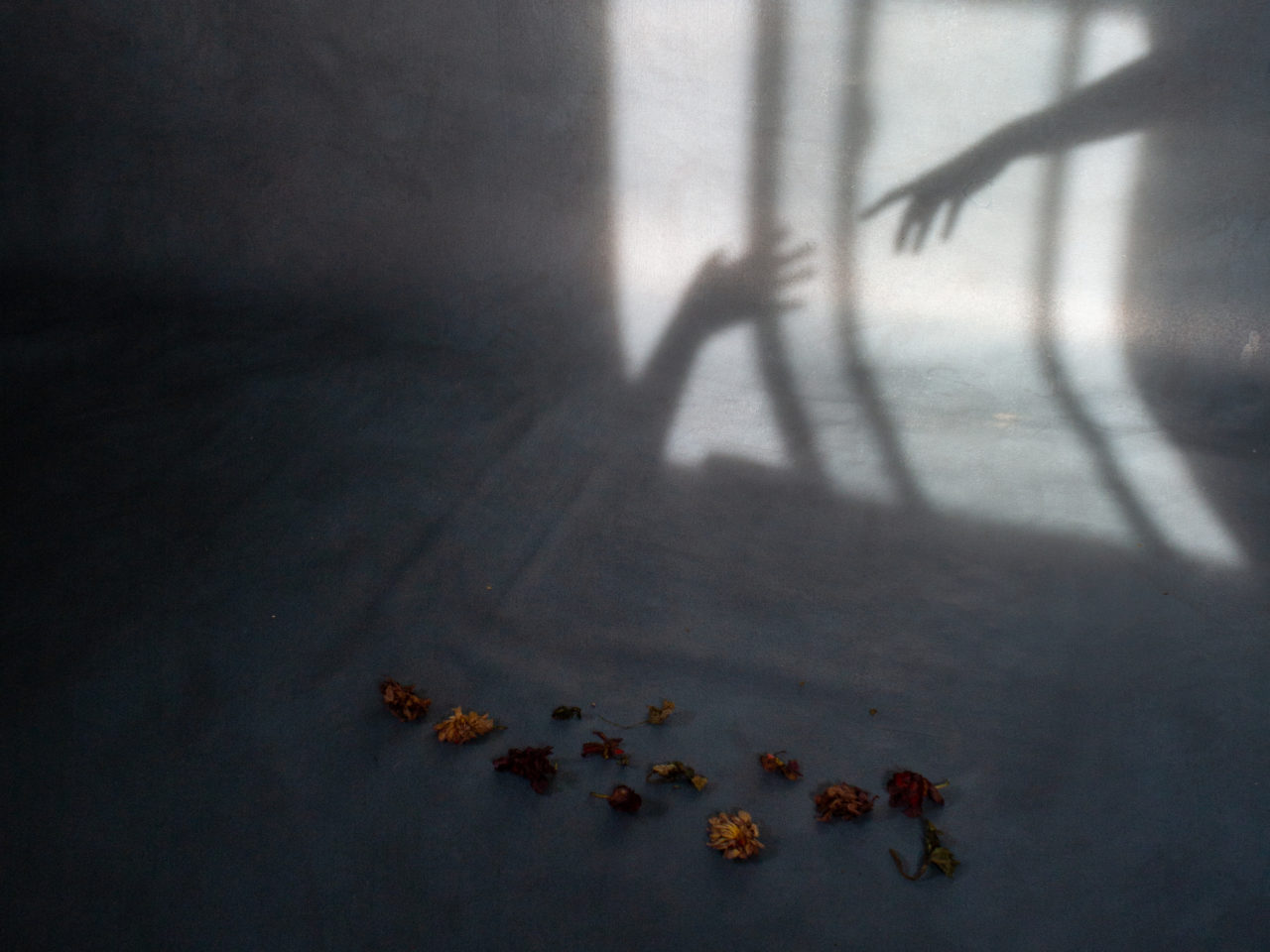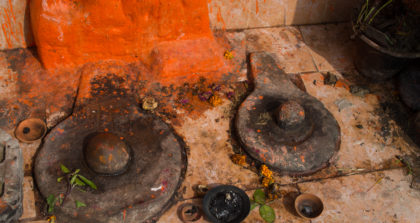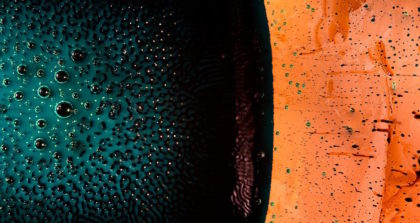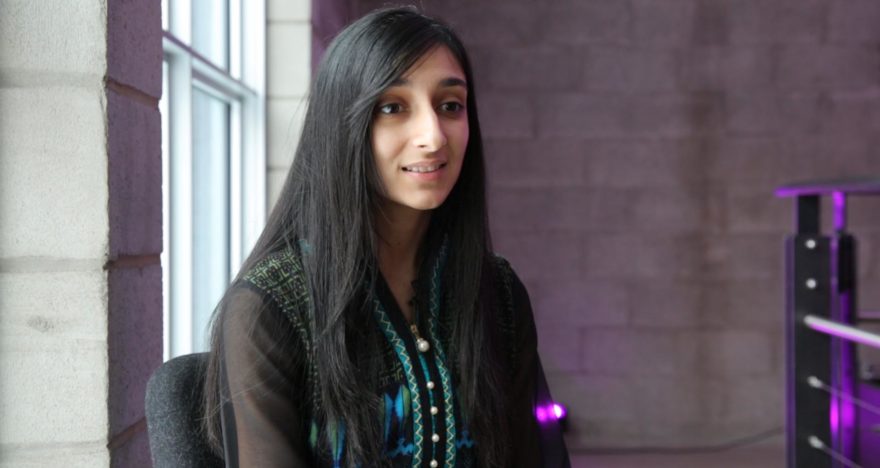In Spirit: Desire, love and seduction

In the cultural context of India, the notion of “love” as it is perceived today in the West does not exist. Our vision of love is very modern and mostly reflects our pathological way of approaching the world. Love in its deepest sense is at the heart of many traditional Indian texts or in sculptural representations, such as Krishna and the Gopis. It is not a mundane love like the one we have today – people who like or dislike each other, marry for love and divorce in hatred. Love is not something that should be able to appear and then disappear, love is that space that exists without purpose, before the person begins to exist with his schemes, his defences, his reactions and his compensations. A love that gives itself a reason is not love, it is barter. Sanskrit texts refer exclusively to the notions of love and desire in an ultimate context. We are very far from the ten step recipes to find the perfect love that is being sold in bookstores today.
It is interesting to dive into traditional Indian culture to see that at one time, a vision of the human being existed in a much more comprehensive understanding with all that they embodied. Marriage was not an act of love, it was a functional space that would allow children to grow well, the family to flourish and so each individual could develop in his work, his quest for the pleasures of the senses, his tasks to be accomplished and his devotional life. Duty passed before rights, passions were reserved for passing adventures that had their place in society, but there was this understanding that it had nothing to do with marriage. The human being was understood in its entirety and passions, desires, obligations, everything was integrated into its proper place to allow the well functioning of society. This is an understanding that we have totally lost in our time.
In the mystical texts of Kashmir, the worldly desire must be elevated in its purest form (icchamatra). Unlike other traditions that seek to suppress any notion of desire, it is not a question here of suppressing anything, but rather of carrying out a kind of transformation by orientating it towards its divine nature, letting it incarnate itself in its deepest nature, which gives rise to what is called the cosmic will (iccha). It is not a matter of getting rid of passions, but of bringing back the desire to its original source, which is the wheel of energies, the primordial pulsation (spanda).
The Sanskrit alphabet is profoundly erotic in the mystical sense of the term: from the first letter to the last, it is the manifestation of the world that is emerging. The first letter of the alphabet “A”, Shiva, meets the last letter “H”, Shakti, united by their passion (kama) to create the totality “Aham” which is none other than the absolute self. The practitioner of the spiritual path seeks only one thing, to reintegrate this cosmic cycle that he carries within him, to touch this absolute “I”.

When you understand and accept that there is another possibility, another angle of approach in terms of functional life or that of traditional perspective, you begin to question what is happening in you. If I really look at how I function, I will realize that many times in my life, my desire that has been filled has brought me joy and satisfaction for a limited time. The person who fills me in the moment no longer fills me the next day, a year or ten years later. Why? Because what I wanted deeply was of another nature and did not hide in the individual, or the car, or the house, or the career change. What I deeply desire is tranquillity, where I meet the cessation of this dynamic of questioning, defence, planning, doubt … the very cessation of desire, in fact. What I am looking for deeply is tranquillity. When I understand this, I stop spending energy on the outside.
The relationship is my gift. People who think that one relationship destroys them, another is abusive, is a lack of perspective. We must come back to ourselves. If I fall into a pattern of abuse, it’s because I carry it in me, if I let myself be abused it means that I carry this story in me, if I feel abandoned, is that it is a diagram that inhabits me. Otherwise, these elements would not take root. What touches me is an echo to something I am already bearing inside of my story.
In the relationship, we learn everything, because it makes us dive into our emotional world, it reveals our compensation. As long as I do not see it as a gift to better see how I work, I suffer. You realize that, finally, it’s always from you that introspection begins, you can not pretend to blame someone else. It’s you, your journey, your work, your way of perception. It is coming back to oneself, always coming back to oneself. In this return, it is the intimacy. I feel.
When I have the deep intuition of this possibility, that this vision stands out as a truth, then in my interactions what becomes the most important thing is no longer to be loved, but, it is to see how much I seek to be loved. It is no longer to seduce, it is to see how much I am in constant seduction. When this movement is actualized, when this understanding touches me, I begin to fall in love with my functioning, and my only desire becomes the exploration of who I am, which unfolds through the encounters of each moment.
It’s difficult because it means letting go of my story. The story of myself who loves this, does not like that, has suffered from such abuse, experienced such traumatic situation, etc. At the same time, it is not in your hands: in the same way that the dancer cannot do anything but dance, that the painter cannot not paint, the one who is in search cannot do anything else to desire to see and thereby to die to themselves. It is grace that visits them. One is driven by the inevitable, there is no will or personal intervention in this process. This desire for honesty against oneself is the most enormous, the most gigantic thing that can happen to you. It is devastating as long as it is soft and silent.
In the tantric pantheon, this devastating energy is represented by Kali, Chamunda and their cohort of yoginis. Kali cuts the head, it is the mind, the ego who is dispossessed of his body and abdicates. With Chamunda, it is the emaciation of the vitality, of all dynamics of the person who seeks something. The yoginis, who are the consorts of the principal deities, have this place, they are the initiators, those who make people sick, who destabilize the senses of the person and in order cut their system of reference. Without a reference system, you have no more history, you do not know what you want.
We must see how your desires are based exclusively on your life, your experiences, your traumas, your education. There is no choice in what you want. Desire, in other words, refers to your most mundane mechanisms and habits. It is not to flee, to undo, it is to listen and observe, to explore and to see in you if the possibility that there is a space in which the desire intervenes in another way resonates.
Then emerge a desire that does not find its source in my system, but in a more interior call. It is a desire that one could say “cold”. In which the affect has no place. There is no stake, nothing to win, nothing to lose. It is a desire for intensity, archetypal one could almost say. It is not a desire that comes from a lack of a memory, it is the desire that caps and embodies the essential dynamics of the world. At this point, seduction can become a form of celebration, as seen in some nomadic or gypsy Indian tribes. It’s an integral part of the culture: jewels, make-up, clothes are appearing that celebrate the strength of the woman in all its deployment, and the seduction is not motivated by a lack but unfolds to reflect the game of archetypal Consciousness that seeks itself in its own reflection.
Do not do anything with it, do not try to understand it, just let the resonance live in you like the perfume that blooms in space even when the flower has disappeared. Do not create an fantasy, but emphasize the fact that there is another possibility, and see if a resonance incarnates in me at that moment. My job is to come back to myself, to discover and become familiar with this exploration, with the very act of listening to the movements that take place within myself.

In my travels, through my collaborations, I met many people. Prostitutes, gangsters, artists … we must not think that in the transgression, out of the frames, people are happier. What makes you happy is the intensity, it’s exploring. It is for this reason that artists need so much to create: because in the moment of creation, they no longer exist for themselves, there is no more desire, there is no longer a stake no more is calculated. The artist is being taken in charge, without seeking a specific goal, it is an intuition that guides him, a form of urgency in which everything is clear. He just has to let himself go. It is very intense the space of creation. Afterwards, you have to learn to understand the process and bring it into this area of everyday life (but that’s another story).
When Eric Baret talks about prostitutes or lovers, it is not for the freedom of social norms, but simply to return to concrete examples of everyday life that people can relate to, because the majority of husbands or wives have mistresses and lovers, or visit prostitutes. But we should ask him the question directly.
What’s important ultimately is not what you do, but how you do it. To seduce, to love, to desire, is it something that you do in compensation, to exist, or is it a form of celebration, an expression of profound freedom? What I want to see, intimately, is that moment when I start pretending again. That it is with a lover, the moment when I come into competition with another woman or another man, the moment when I try at all costs to be recognized or listened, the moment where I sell myself. It is almost necessary to see it like this: pedagogically, the experiences of letting go serve only one thing, better to see the moment when I come back in the tension, the doubt, the anguish.
After orgasm, when there is no more demand, no desire, there I feel calm invading me. At that moment, be attentive to the passage where I begin to pretend, where I need to establish an emotional bond with my partner to reassure me. To see, to listen …. there is only that which will allow me to touch the most intimate and deep space of my being. It is a quest for oneself in its most direct, simplest and most curting form.









View Comments
No Comments (Hide)